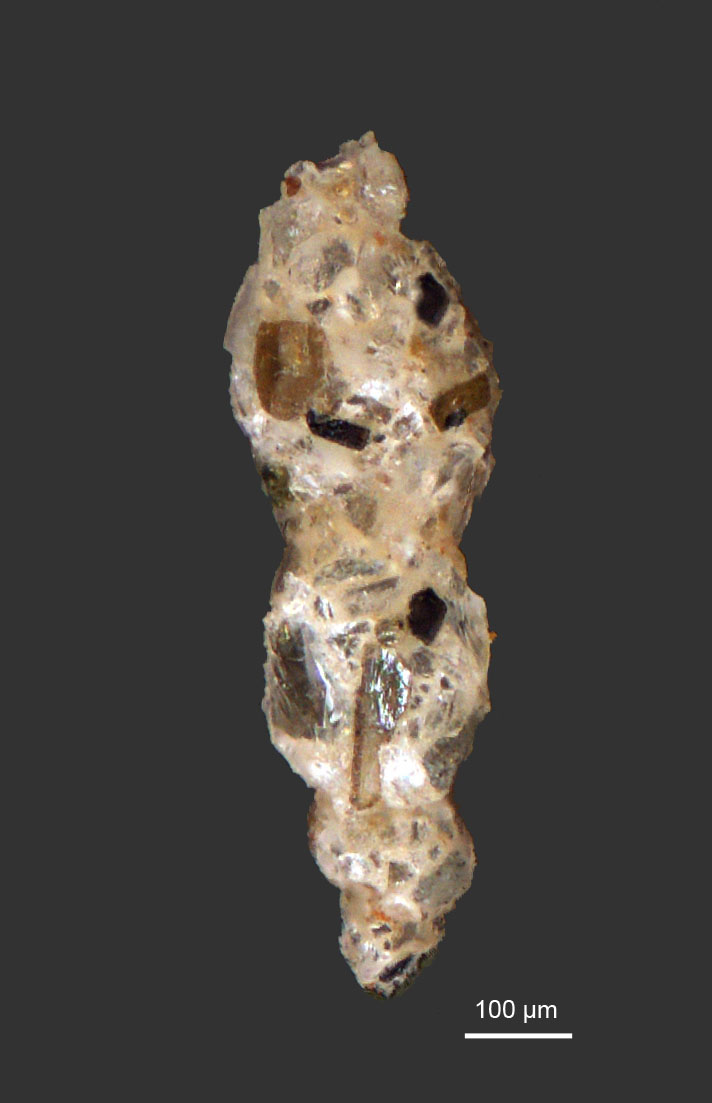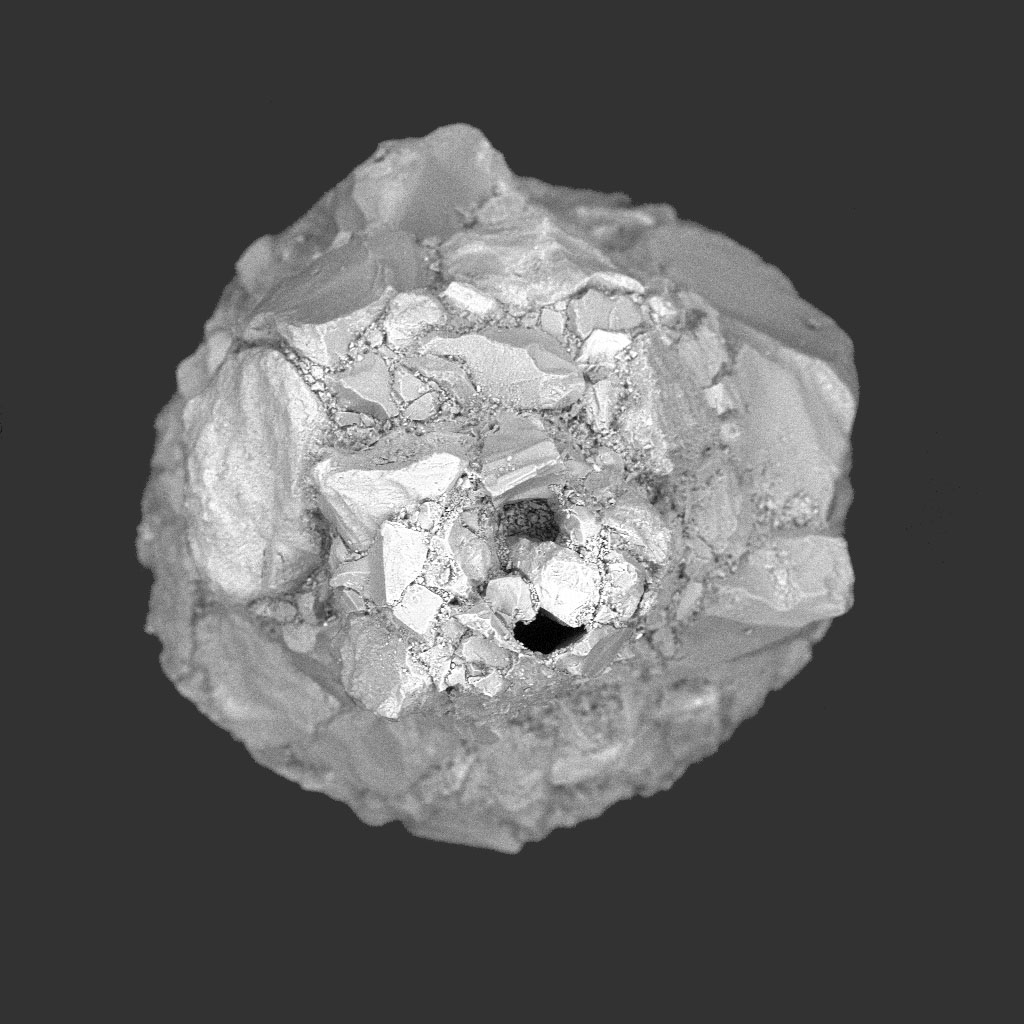Genus Reophax
Reophax de Montfort 1808
The description of the type species Reophax scorpiurus is taken as the description of the genus Reophax de Montfort. Brönnimann and Whittaker (1980) emended the description.
Reophax scorpiurus de Montfort 1808
Reophax scorpiurus de Montfort, 1808, p. 331; Cushman and McCulloch, 1939, p. 589, pl. 2, fig. 13; Smith 1973, p. 14, pl. 1, fig. 13; Lankford and Phleger, 1973, p. 127, pl. 1, fig. 3; Bergen and O’Neil, 1979, p. 1292, p. 5, fig. 17; Brönnimann and Whittaker, 1980, p. 262, figs. 1-7, 12, 17;
De Montfort (1808) described Reophax scorpiurus as the designated species for the new genus but did not select a type specimen. The description was based on an illustration by Soldani, 1795, that was a single specimen collected in the Mediterranean (Brönnimann and Whittaker, 1980). Detailing the complicated early history of the species, and because of the long and frequent use of the name in the literature, Brönnimann and Whittaker chose to redefine the genus Reophax on the basis of a neotype and 12 paraneotypes for R. scorpiurus.
Emended description: Test free, elongate, arcuate, consisting of a single series of chambers which normally increase in size during ontogeny and overlap to some degree onto the preceding chambers. Initial portion at least is incurved or early chamber arrangements suggests curvature. Adult chambers subglobular, cylindrical pyriform, rounded or somewhat compressed in transverse section, asymmetric in side view, ventricose, heteropolar, devoid of internal structures, infolds of wall and siphon. Wall agglutinated, single layer, imperforate. Aperture terminal subcircular, oval and elongate oval.
The absence of type material for de Montfort’s species previously led to the inclusion within Reophax of many uniserial agglutinated taxa that otherwise differ. The genus is now firmly based on the designated neotype.
Distribution: In Puget Sound the most abundant records of R. scorpiurus are in Elliot Bay.
Reophax advena Cushman, 1919, p. 599, pl. 75, fig. 2.
Type description: Test elongate, thick: walls composed of very large, mostly clear, sand grains angularly cemented with a pale yellowish cement, in which are embedded very fine fragments; surface of the cement smooth and fragments of the test standing out as angular projections; chambers usually three or four, increasing gradually in size, the last formed one being the largest. Length up to 5mm.
Distribution: This species was named for specimens from New Zealand. It is found throughout shallow waters of Puget Sound but is most abundant in the southern end of Hood Canal.



